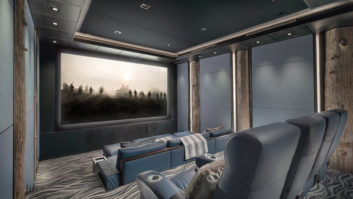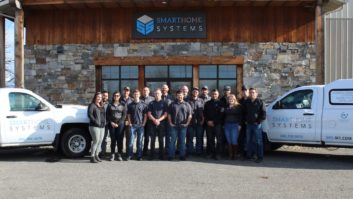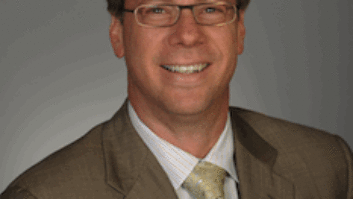”CEDIA, what have you done for me lately?” is more than a rhetorical question these days, as veterans and newcomers of the 20-year-old association look to recruit younger integrators, elucidate the association’s relevance during challenging times, and to put forth a message that CEDIA and its educational curriculum are essential to the future of the industry.

Leaders of CEDIA are looking to recruit younger integrators and to put forth a message that CEDIA and its educational curriculum are essential to the future of the industry.
The delivery is impassioned, designed to demonstrate how the heavy lifting CEDIA did in the 1990s has benefited many who may be unaware of the gift.
CEDIA’s major initiatives, such as government affairs and industry outreach, often fly below the radar, says CEDIA chair Ken Erdmann, president of Erdmann Electric, in Springville, Utah.
“A lot of members don’t realize the amount of time and money that goes into these efforts,” he said. “CEDIA is active as a consultant and, to a very limited extent, in a lobbying role on behalf of the lowvoltage industry as a whole. Our grassroots effort is aimed at places where there are issues that are detrimental to our industry, such as legislative efforts that may limit the work of a CEDIA-type company.
For example, CEDIA has stepped in to fight legislation limiting a low-voltage contractor’s access to lighting control work. “We’ve been successful in educating legislatures on the true impact of these measures and in reframing bills so they don’t put anyone out of business,” Erdmann explained. “CEDIA also has a public policy director, Darren Reaman, on staff.”
The efforts benefit everyone in the trades, Erdmann adds, including some non-members who don’t understand that CEDIA, through grassroots efforts, was able to get a law reframed in Texas earlier this year that would have limited lighting and integration work. Hundreds of e-mails went out in an afternoon to the legislator who then started a study of the issue.
Erdmann, who also serves as a CEDIA University instructor, finds it challenging to overcome the criticisms of those who accuse the organization of always having its hand out.
“There are anti-CEDIA voices on blogs, and we’ve tried to respond to them, to tell them what their dues really accomplish,” he said. “The criticism is unfounded given what I know about how CEDIA spends. For example, we have a seat before the California Energy Commission, which is tasked with writing energy-saving ordinances. As a board, we’re giving membership the floor to make sure we address their needs and hear their concerns. We want to overcome the perception that CEDIA’s volunteer leadership is detached and aloof. We’ve made strides and we’re open and available.”
A CALL TO ACTION
For Mike Creeden, CEDIA Education Council chair, the clarion call must focus on the younger incoming generation.

CEDIA chairman Ken Erdmann (pictured here during the CEDIA EXPO 2009 banquet dinner, finds it challenging to overcome the criticisms of those who accuse the organization of always having its hand out.
“There is a generational gap in which 25- to 35-year olds are disenchanted with CEDIA leadership,” he said. “They feel as if they have no voice or opportunity to serve this organization in any leadership capacity. There is no forum or mentoring program to hand off the industry to them as time goes on.”
Creeden, who is 34, has owned his business, M&R Digital Innovations, in Spring Grove, Illinois, for 15 years. With plans to step down as chair after the next EXPO, he says reconnecting with younger companies and members was his goal during the past year.
“We built our education volunteer teams with new blood, new ideas, new energy, and new ambition,” Creeden said. “We also re-enlisted the services of members who haven’t been recently involved in CEDIA education, who can help guide this new generation, by providing the history of CEDIA’s educational offerings.”
For the second time last year, CEDIA University’s Learning Labs offered technicians a more hands-on experience, he noted. “Through our partnership with ADI we were able to offer just that. ADI has recommitted for a third year at EXPO 2010, and we will bring back the Installer Olympics, furthering our goals to engage the younger generation of professionals.”
Creeden’s proudest moment came at this past October’s post-EXPO meeting in Indianapolis, where 80 percent of the participants were new to CEDIA volunteerism. A D-Tools blog entry by Ryan Brown, in which Brown detailed his satisfying experience at the meeting and his CEDIA involvement, is a testament to how passionate the upcoming generation can be, Creeden noted.
“We need 10 more Ryan Browns,” he said. “That’s our longevity; that’s how we’ll survive going forward.”
Matt Carter, president of Encore Technology + Design of Raleigh, North Carolina, took a “Train the Trainer” CEDIA course three years ago given by CEDIA veteran Rich Green, and it changed his professional life. The Registered Outreach Instructor (ROI) course, which is designed to equip CEDIA members with the tools and skill sets to reach out to the residential construction industry, helped convince Carter to get more involved in CEDIA training.
“The bulk of CEDIA membership is made up of smaller firms finding it hard to dedicate time to market what their industry and business are all about,” Carter said. “They’re busy fighting the daily battles of getting designs right and making sure the technology works”.
Bringing CEDIA members together with the professional members of other construction trade associations seems like such a simple concept, but the energy CEDIA puts into it has increased dramatically in the past few years, he says. “I’m involved because that course taught me how to provide the education CEDIA was assembling for the design community and gave me access to the CEDIA Industry Outreach program. My prior entre to an architect’s firm was only as a sales person.”

CEDIA’s approved continuing education courses allow Carter to talk directly to architects as an industry and association professional, and this program is available to all members, he says. “There’s a tremendous amount of value in that. I wouldn’t be where I am today professionally, if it hadn’t been for core CEDIA education delivered by people like Frank White. Learning how to teach other professionals is a system that has fundamentally changed my ability to grow any business.”
When, after that first course in 2006, Carter felt he wasn’t fully prepared to make a formal presentation, he penned a two-page document about his vision for CEDIA’s Train the Trainer course. From there, he was asked to serve on the ROI Action Team. “In helping to expand the course into a full-day program, we are putting educators on the street with stronger messages and excellent content,” he said. “Now, as chair of the Industry Outreach Council and vice chair of the Home Technology Alliance (HTA) I am able to return to the industry the value I have received from it through the efforts of many previous CEDIA members.”
CEDIA University instructors who assume their assessment forms go right into the trash are mistaken, says Robert Ridenour, senior category manager of integrated solutions for Niles Audio, and a CEDIA instructor pool chair.
“The assessment impact is substantial,” he said. “We used to say that a dog could give a class and get a score of three out of four on a review, and a talented dog could get a four. But the reality is that course assessments are read, and the numbers vetted to spot trends with comments prioritized. Each year, a third of our class content is overhauled from minor changes to complete revamping.”
Ridenour’s commitment to CEDIA education draws from personal experience, he says. “When I started working in this industry, in 1987, there was no CEDIA and no ‘industry.’ We all taught ourselves. We were like dentists with pliers in the Old West; if it worked you were doing it right.”
His advice to those entering the industry revolves around education. Learn as much as you can about what you’re doing, he says, even if you don’t think you need it.
“CEDIA started working on Internet Protocol education five to seven years ago when many didn’t regard it as important to CEDIA,” Ridenour said. “Now the future of our industry is in that protocol. Why do IT professionals need to learn about amplified systems? Because our industry is one of the most difficult to be a part of, and because it’s so broad-based. CEDIA remains the only place to learn about lighting, security, Internet—all the systems, all under one roof and one access point.”
WAY UP NORTH
“We see ourselves as set apart from American CEDIA members, with different issues and requiring different solutions, says Marilyn Sanford, president of La Scala in Vancouver B.C. Sanford founded and served as president of CEDIA Canada, is a CEDIA Fellow and currently serves on its board.
Her viewpoint from working on CEDIA Canada before moving onto the North American board is that more of her countrymen (and women) are needed on the board, which is receptive to the idea.
“I believe Canadian membership has about 200 CEDIA members, representing approximately 10 percent of CEDIA North America membership,” she noted. “It may not be apparent to Canadian dealerships, but we have made more progress by having representation on the board.”

CEDIA Education Council chair Mike Creeden says that reconnecting with younger companies and members was his goal during the past year.
With the U.S. market ahead of Canada by 18 to 24 months, Canadians, more conservative in buying habits and sometimes held back by CRTC (Canadian Radio-television and Telecommunications Commission) approval requirements, have a little lag time, putting them in a great place for observing, she added.
INDUSTRY ADVOCATES
CEDIA CEO Utz Baldwin is adamant about participation in the association. “We must go to the table and build consensus as to what this industry will become,” he said. “The only way to accomplish this is through involvement.”
Although the organization has historically represented high-end custom installation firms, Baldwin says, adoption rates have diversified CEDIA’s channel, and today custom is a level of services.
“The face of CEDIA has changed,” he explained. “Today, CEDIA represents the professional companies and individuals that deliver the Electronic Lifestyle.” However, Baldwin says, high-end integrators, who were once the primary member of the association, need not fear the future, as innovations in home health care, energy management, video conferencing, and virtual reality continue to drive emerging market business. CEDIA, he explains, will be the mechanism to provide access to and education about these new technologies and markets.
“CEDIA needs critical mass,” Baldwin said. “Ultimately the strength in any association is to represent votes and tax dollars. And if CEDIA is to successfully advocate for its members, we need to represent the entire industry, providing value for all who join.”






